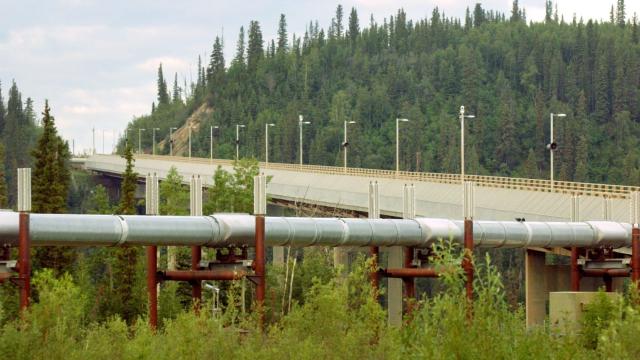When it comes to the U.S. oil and gas industry’s greenhouse gas pollution, I tend to think of well-known and much-hated oil giants like Chevron and Exxon. But a new analysis released Tuesday shows that when it comes to the energy sector’s methane emissions, these massive firms aren’t the only major contributors. Small, relatively unknown fossil fuel drillers are some of the worst culprits, particularly when it comes to methane emissions.
The research, which was commissioned by Clean Air Task Force and Ceres with support from Bank of America and conducted by the energy consultancy M.J. Bradley & Associates, analyses federal emissions data from the Environmental Protection Agency. As the New York Times pointed out, it shows that Hilcorp Energy, one of the largest privately held exploration and production fuel firms, is the single biggest contributor to fossil fuel methane emissions.
That’s true even though 18 other companies produce more natural gas than it does because its emissions intensity — a measure of pollution produced per unit of energy — is higher than those other corporations’. In 2019, Hilcorp emitted 141,274 metric tons of methane. That is nearly 50% higher than the firm next in line, Exxon, which is the nation’s largest fuel producer. Given that methane is roughly 80 times more potent than carbon dioxide, the relatively tiny company’s emissions are an outsize danger to the climate.
Hilcorp wasn’t an outlier, either. Four other small, lesser-known firms, including Terra Energy Partners, Flywheel Energy, Blackbeard Operating, and Scout Energy, were also in the top 10 biggest methane polluters, sitting beside household names like ConocoPhilips and BP.
Since these little-known companies largely fly under the radar, they’re not subject to the same kind of public probing that global fossil fuel giants are. Unlike multinational majors like Exxon and BP, companies like Hilcorp don’t have their environmental commitments torn apart by energy researchers and aren’t the subjects of high-profile climate lawsuits.
In some cases, these sneaky polluters’ emissions are directly tied to those heavier hitters because the small firms often buy up the big ones’ highly polluting operations. For instance, BP decided to get rid of its Alaska fuel operations last year. That made it look pretty good, because estimates show that oil BP extracted from Alaska’s North Slope had double the average emissions compared to the rest of its portfolio. BP has promised to reach net zero emissions, and shedding its Alaska assets brought it closer to that goal; last year, it reported a 10% reduction in greenhouse gas output. But Hilcorp gobbled up the energy major’s assets there, so the drilling didn’t stop, and neither did the pollution. Instead, it was handed over to a more opaque, less-scrutinised entity.
Similarly, in 2017, ConocoPhillips sold off its highly-polluting gas wells in the San Juan Basin, and that year the company reported that its greenhouse gas emissions dropped by 20%. Sounds good, right? But again, Hilcorp bought those gas wells and continued operations there, and according to the New York Times, they were a top methane polluter that year.
The report shows the dangers of mistaking big energy firms’ climate pledges for overall emissions reduction plans enforced by outside regulators. As Kathy Hipple, a finance professor at Bard College, told the New York Times, “You’ve got an industry that is, in a sense, managing its decline.”
But it doesn’t have to be this way. Instead of letting the industry pass around dirty energy assets in a dangerous shell game, regulators could step in and force companies big and small to stop expanding their operations and phase out existing fossil fuel production. Or better yet, the U.S. could bring the entire fossil fuel industry under national control in order to govern it directly and wind it down in a planned way.
